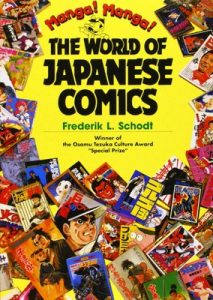 [Spoiler Alert – it’s pretty much everything.]
[Spoiler Alert – it’s pretty much everything.]
After 12 years of serialized manga, Hajime Isayama’s Attack on Titan is done. It didn’t take long for the online critics to start dissecting the controversial conclusion: Is it unsatisfying? Is it maybe a little cringeworthy?
I’d argue it’s both. But more than that, now that we can analyze the work as a whole, I’d say Attack on Titan was probably never very good to begin with. The signs were there almost from the very beginning.
It’s hard to overstate how massive a phenomenon Attack on Titan was in its early years. In Tokyo, you could hardly buy snacks at a convenience store without seeing the image of the Colossus Titan peering over Wall Maria. In hindsight, though, maybe a few such iconic images were all the manga really had going for it. » More... »




 I’ve long been a fan of Dario Argento’s 1977 horror flick Suspiria, and I’m certainly not alone. Among horror film aficionados, Suspiria is revered as much for its memorable cinematography and score as its ability to remain compelling despite having an almost nonsensical plot. So when the news came that a remake of this seminal Italian film was in the works, the natural question was, “Why?”
I’ve long been a fan of Dario Argento’s 1977 horror flick Suspiria, and I’m certainly not alone. Among horror film aficionados, Suspiria is revered as much for its memorable cinematography and score as its ability to remain compelling despite having an almost nonsensical plot. So when the news came that a remake of this seminal Italian film was in the works, the natural question was, “Why?”  Well, it’s here at last. The first episode of the new series of Doctor Who has arrived, bringing with it another first for the long-running British series: the first female Doctor, in the form of actor Jodie Whittaker. So does it deliver the goods?
Well, it’s here at last. The first episode of the new series of Doctor Who has arrived, bringing with it another first for the long-running British series: the first female Doctor, in the form of actor Jodie Whittaker. So does it deliver the goods?  With the rise of HTML5, a lot of folks wonder whether it might displace plug-ins such as Adobe Flash for rich Internet Application development. Adobe doesn’t see it quite that way. It sees the two technologies as complementary, and it’s putting its money where its mouth is. Adobe Edge is a new technology from Adobe Labs that aims to make it as easy to build complex animations in HTML5, CSS, and JavaScript as it is to do the same in Flash. It’s still rough around the edges, but it does make it possible to do some pretty remarkable things, especially if your goal is to develop banner ads, infographics, or other short animated sequences to be embedded in Web pages. Read on for more of
With the rise of HTML5, a lot of folks wonder whether it might displace plug-ins such as Adobe Flash for rich Internet Application development. Adobe doesn’t see it quite that way. It sees the two technologies as complementary, and it’s putting its money where its mouth is. Adobe Edge is a new technology from Adobe Labs that aims to make it as easy to build complex animations in HTML5, CSS, and JavaScript as it is to do the same in Flash. It’s still rough around the edges, but it does make it possible to do some pretty remarkable things, especially if your goal is to develop banner ads, infographics, or other short animated sequences to be embedded in Web pages. Read on for more of